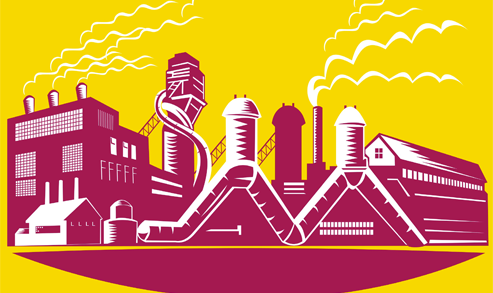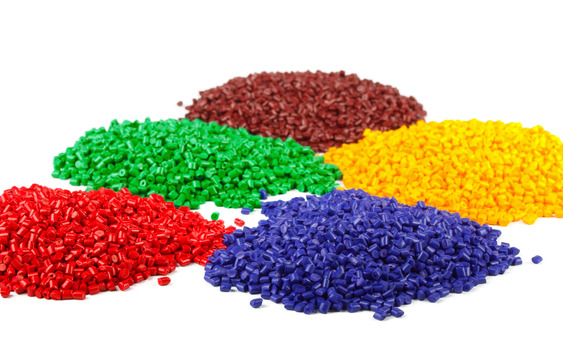
by Admin | Jun 3, 2014 | Plastics, Recent Posts |
Injection Molding: An Overview
Injection molding is the most common procedure used to produce plastic parts, and it forms an integral part of a vast array of different processes in most manufacturing sectors. It is commonly used to mass produce a specific part and ensure that all the objects are uniform, which is important for products that are modular and require high precision manufacturing. While many people look to new technologies such as 3D-printing as an innovation that will surpass injection molding as the go-to process to mass produce high volume objects, injection molding is continuously evolving, and there are new trends that will improve upon the process and ensure that the Injection Molding Industry remains in the forefront of manufacturing. (more…)
by Admin | Jun 2, 2014 | Plastics, Recent Posts |
Newlight Technologies has created a way to take greenhouse gases from our atmosphere and turn them into plastic pellets now being used to make mobile phone cases, explains this article from The Guardian. This opens up a whole new thinking for how plastics could effect the world. With the ability to harness carbon from greenhouse gas and use it as a constructive resource for materials we could start to create a greener world. Read more about whether this new method of modern day alchemy will take off or not…
by Admin | May 20, 2014 | Plastics, Recent Posts |
Bioplastics Play Increasing Role in Packaging Solutions
New trends in bioplastics include greener innovations to provide high-quality fully compostable packaging. Here is an interesting article from Plastics Today that discusses packaging as the leading application for all types of bioplastics and outlines some of the structures, designs, and applications. Check in on some of the top bioplastic developers in the world and find out what some of the advantages and disadvantages of their specialty products are.
Click HERE to see full article.

by Admin | May 14, 2014 | Plastics, Recent Posts |
Nearly all processing operations tend to generate regrind. Hence, it is important that you have the ability to reprocess that right into the operations, especially since the cost of resins and plastics is soaring sky-high. Moreover, some processes tend to generate more regrind compared to others. A good example is in injection molding, wherein cold runner systems produce more regrind plastics compared to hot runner systems. And for some industries, like automotive, regrind may not be an option, but if it’s possible for you to cut down on waste by using regrind, it may create significant value.
Before using regrind plastics it’s important to develop a strategy for any industry. The heat used in the process and the grinding may result in degradation of the chemical, physical, and flow properties of the regrind plastics and this, in turn, has a profound effect on the parts made. So, being able to maximize the value of regrind plastics is imperative.
Developing a Strategy for Optimizing Value
Before you come up with a strategy to optimize the value of regrind plastics, you need to understand the issues. This will allow you to have the right procedures and systems on the shop floor. Some of the issues that you need to consider are as follows:
- Contamination due to another plastic, wood, dirt or metal
- Size of the granules in the regrind
- Amount of degraded plastic (polymer) present in the regrind plastic
- The excessive fines present in the regrind
- Keeping record of the actual level of regrind
How to Maximize Value?
In many cases, injection molders tend to use a blend of virgin and regrind plastics. To overcome some of the issues, you may want to consider using 100% regrind plastic. In other words, you do not have to do any blending whatsoever.
Basically, what you do is first use the virgin plastic and resin completely and afterwards you feed the regrind plastic into the machine. If you do this, you have the potential to reap several benefits.
- You never have to worry about proper blending of the virgin resin and regrind plastic
- There is no hassle about determining the amount of regrind present
- In case there is degradation of the polymer, the machine will notify you, as long as you keep a close watch on the pressure and velocity control during the transfer
- The different granule size may have an effect on the drying time, but this can easily be resolved by using the right drying conditions and making use of a good dryer
- There could still be an issue with contamination, but using 100% regrind plastic makes the process self-purging and this allows the contamination to be removed from the stream
- You can easily keep track of the regrind plastic by having an efficient labeling system that mentions the regrind plastic lot number as well as the number of passes used. In case a poor part is made, it can be discarded
- You can easily test the parts made from the regrind plastic and compare the test results to those obtained from the virgin plastic parts. If the properties are okay and the parts from the regrind plastic pass the test, you can go ahead.
Using this strategy, you will be able to maximize the value of regrind plastics and also save money, since you would not have to invest in blending machines or equipment.
Do you use regrind in your operations? Nanoplas’ family of products, including mold release coatings, mold release sprays and lubricating greases can work with both virgin and regrind materials, helping to increase production and efficiencies.


